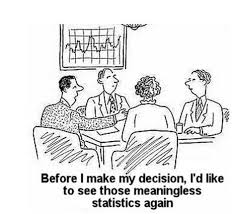
Vanity metrics mean or measure nothing. Well, except to stoke ego of those reporting these vain metrics or used to hide a problem.
Whilst saying your company moved goods worth US$ 6Billion in the first quarter of 2020, sounds good to the ears, it really doesn’t say much. Except, if your shareholders have invested in ‘goods movement ‘ and not in a logistics business.
Saying how much you made from moving that volume of goods is perhaps the real metric you should report. And you will agree that that is perhaps the most of interest to your investors and to your bottomline.
In addition to stating your total sales, your investors and other stakeholders, will be more likely than not be interested in knowing the cost of moving the those goods (ypur cost of sale), total revenue (sales), and total earnings before interests (if you took a loan to finance any part of the sale or your operation), taxes, depreciation and amortisation (EBITDA). An interesting to have metric is also average revenue per transaction – knowing this sheds some light on how much output you get from your company’s effort on average.
Perhaps the only use of the metric ‘volume of goods moved’ is to illustrate how efficient your operation is, and to “pepper” your competition if your size is significantly higher than industry average. But that is where the relevance and usefulness of the ‘volume of goods moved’ as with all vanity metrics ends. Vanity metrics on their own mean NOTHING.
Your stakeholders and even you should be interested in knowing how your business performed against the industry you operate in. Some of the key questions you want your metrics to answer includes but are not limited to:
- are you spending more money per kilogram of goods moved?
- are you returning more or less for every cent in investor equity as your peers in the industry (return on equity – ROE), are you maximising or not the assets deployed (asset turnover ratio) and
- of course the investor will calculate the the price of their equity in your business and compare this to your earnings (PE ratio).
All of these done continuously helps the investor and you hold yourself and the business you run accountable – you will spot issues preventing eficiencies and look for opportunities to optimise.
Having said that, what one metric really tells you how you business is doing? you should find and track that.
And on another note, what vanity numbers are you taking joy in? You should find that/those and stop wasting your time tracking them.
For me, running a facebook promotion (an operation and not really a business) I needed to get 50 people to fill a form. Facebook reported after three or four days of the promotion that we reached 13K people, we have had 138 engagements (likes, shares, comments and link clicks).
But guess what, we had zero form completions.

I’d be right to tout those numbers, and hide the fact that I haven’t achieved the goals I set out to achieve. But guess what, that is not good enough, and I have had the promotion paused, whilst I investigate if the non form completion can be fixed in other ways. Yes, that is what an executive should do when the numbers indicate a problem. S/he shouldn’t tout the seemingly positive but meaningless number as ‘volume of goods moved’, except that executive is a truck – the truck that moved those goods.
Interested in getting guidance developing a performance management framework for your non-profit, business or project? Send me a note below:



